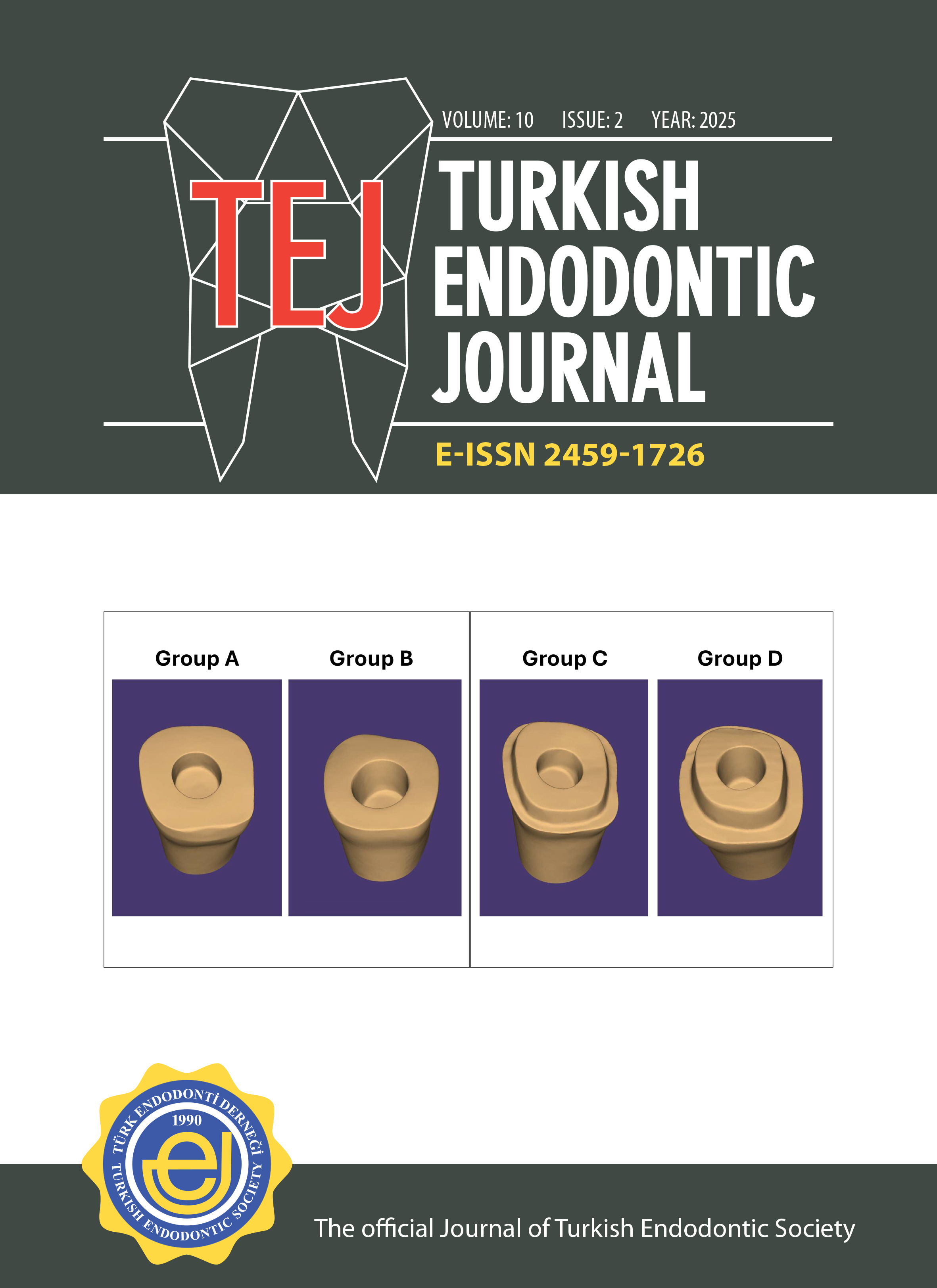Radiographic examination of pulp stones in children and adolescents in the Southeastern Anatolia Region of Türkiye: A retrospective cross‐sectional study
Yelda Polat1, Hasan Said Şener1, Gizem Karagöz Doğan2, Emin Caner Tümen11Department of Pediatric Dentistry, Dicle University, Faculty of Dentistry, Diyarbakır, Türkiye2Department of Pediatric Dentistry, Iğdır University, Faculty of Dentistry, Iğdır, Türkiye
Purpose: This study aims to contribute to endodontic applications and the literature by radiographically examining the frequency and distribution of pulp stones in the permanent teeth of children and adolescents aged 9-16 in Türkiye’s Southeastern Anatolia Region.
Methods: In our retrospective cross-sectional study, panoramic radiographs of 5006 individuals who presented to Dicle University Faculty of Dentistry between 2018 and 2023 were evaluated. The data were analyzed based on age, gender, tooth type, and the dental arch where the tooth was located. For categorical variables, IBM SPSS V23 software was used, and the data were analyzed using Chi-square, Fisher’s Exact, and McNemar tests, with a statistical significance level set at p < 0.05.
Results: In our study, pulp stones were observed in 8.1% of the individuals and 1.22% of the teeth examined, most frequently in the maxillary permanent first molars. A significant relationship was found between age and the presence of pulp stones, where each unit increase in age raised the risk of pulp stones by 1.198 times in the univariate model and by 1.196 times in the multiple model (p < 0.001). While no significant difference was found in the frequency of pulp stones between genders, more pulp stones were observed in the maxillary arch compared to the mandibulary arch.
Conclusion: It was determined that pulp stones in children and adolescents are concentrated in the maxillary permanent first molars and increase with age. Early detection of pulp stones through appropriate preoperative radiographs is critically important for improving endodontic treatment outcomes and preventing complications, thereby underscoring their impact on clinical success.
Manuscript Language: English



















